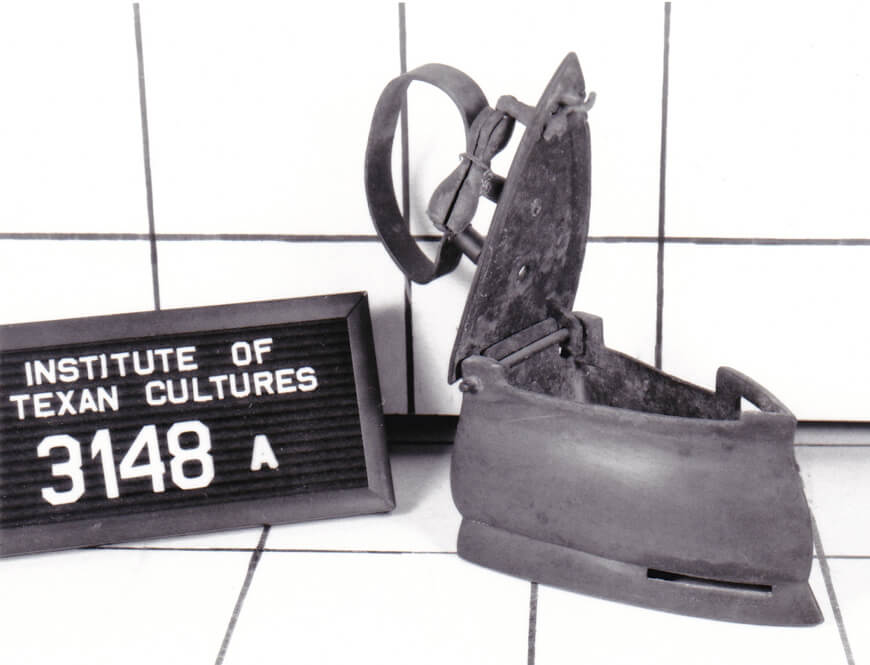This object is a charcoal iron from Hungary. A charcoal iron is an early version of a modern clothes iron that we use today. The reason it is called a charcoal iron is, because it has a container inside its base where burning charcoal is placed to heat it up. The holes that line the base allow air to circulate and keep the charcoal embers burning. Sometimes there is a funnel or a chimney that directs the smoke through the top of the iron keeping the it away from the clothes.
The charcoal iron is a step up from the stones, glass, and presses that were used in Europe when people first started ironing clothes. But there was a similar contraption used in Asia as early as the 1st century B.C. Women would iron clothes with a pot heated with coals, while stretching clothes taut. In the Middle Ages sad irons, also called flat irons, were being made out of stones and metals that are able to hold heat for a long period of time. Some of these materials were cast iron and soapstone. The way that these irons are used is by heating them up in a fire or on a stove top. The reason that this iron is called a sad iron is because sald is an old English word for “solid.” In modern English the sad iron would be solid iron. Sad irons were still used even after the invention of the charcoal iron, up until the 1880s when the first electric iron was invented.
Between the charcoal iron and the sad iron, the sad iron was preferred, because although the charcoal iron was easier to use, it produced a lot of smoke from the coals. The sad iron had its faults too. For one it was not easy to use. It was solid piece of metal with an attached metal handle, meaning that the handle would also heat up. To keep from burning your hands a cloth pad, like a pot holder, had to be wrapped around the handle. The iron would also cool down fast, which meant that you would have to wait for it to reheat, or you would need to have two for continuous ironing; one heating up while you ironed with the other. But around 1870 Mary Florence Potts of Ottumwa, Iowa made an iron with a detachable handle and a base with two points. This made it easier to handle without burning your hands and made it possible to move the iron back and forth without having to pick it up.
